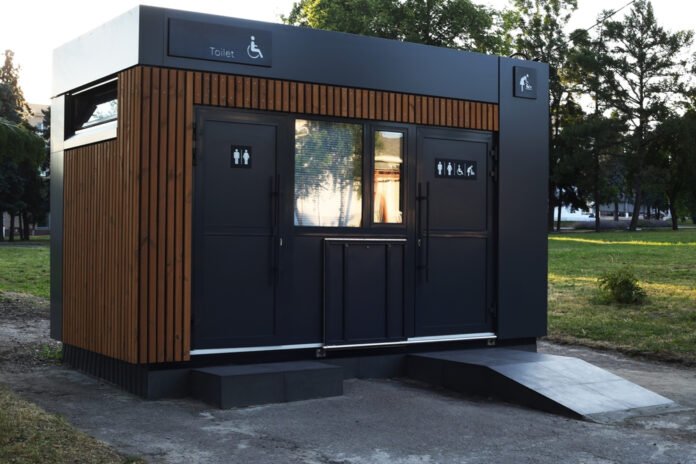Have you ever envisaged an alternative to traditional building structures that are not only cost-efficient but also versatile? If you find yourself answering ‘yes’, then you’ll be thrilled by the prospect of exploring the intriguing world of portable cabins! This extensive guide will navigate through the intricacies and advantages of portable cabins, providing a comprehensive understanding of their various applications in our contemporary world.
The appeal of portable cabins lies in their extraordinary adaptability, accommodating an array of requirements with ease. But what are the real benefits of these innovative structures? And how can they contribute to the evolving landscape of architecture and design in a practical, economically viable way? Our tour through the realm of portable cabins answers these pressing questions and more.

In this post, we will delve deep into the various facets of portable cabins, painting a vivid picture of the range of possibilities at your disposal. From offices to art studios, from holiday homes to permanent dwellings, the adaptability of these structures is bound to fascinate.
Table of Contents
What Are Portable Cabins?
Do you find yourself imagining a small wooden shed hastily nailed together? Shed those notions because today’s portable cabins are a far cry from such rudimentary images! Think modern, efficient structures designed to accommodate a plethora of needs, delivered right where you need them.
Portable cabins, also known as modular or prefabricated buildings, are essentially transportable structures explicitly designed to be moved rather than permanently located. They are often used for temporary purposes but can also serve as permanent solutions thanks to their sturdy build and durability.
Manufactured in a factory and transported to their destined location, portable cabins have garnered popularity due to their time and cost efficiency. Also, they offer the advantage of reduced on-site disruptions, adding another layer to their appeal.
The Versatility of Portable Cabins
Versatility is a standout attribute of portable cabins; indeed, their various applications are tirelessly evolving and expanding. They can serve as temporary classrooms, on-site offices, and even affordable housing, but let’s dive deeper.
The flexibility of portable cabins extends beyond their physical adaptability. Their utilization in diverse sectors – education, construction, healthcare, and hospitality – marks their unparalleled versatility. They can provide urgent accommodation on disaster-stricken sites or an additional room for your overflowing visitors during the holiday season!
Their functional design is suitable for both temporary and longer-term needs, and their ability to be customized to suit individual preferences is a massive plus. Whether you need an extra bedroom, a secluded workspace, or even a comfortable home, a portable cabin can come to your rescue!
Sustainability and Portable Cabins
The conversation around portable cabins would be incomplete without a focus on sustainability. Are these structures eco-friendly? You bet! Due to the building process that takes place primarily in factories, they significantly reduce waste compared to traditional building methods.
Opting for portable cabins is a step towards greener living as manufacturers often use recycled and sustainable materials while making them. Moreover, you can equip these cabins with solar panels and insulation, making them energy efficient and kind to the environment.
Imagine living in a home that not only feels comfortable and perky but also contributes to the welfare of our ecosystem! Portable cabins give us an opening to lead this dream into reality.
Pros and Cons of Choosing Portable Cabins
While versatile and eco-friendly, portable cabins come with their set of advantages and disadvantages. On the plus side, they are cost-effective, flexible structures that aid in tackling accommodation challenges across various sectors. The use of sustainable materials and techniques allows for an environmentally friendly approach to building.
On the flip side, there are potential drawbacks as well. Despite advancements in design, some may still perceive portable cabins as less aesthetically pleasing or robust than traditional buildings. People may see them as impermanent or inferior solutions.
Looking Towards The Future Of Portable Cabins
As our living and working habits continue to evolve, so too do our dwellings. With increasing urban density and escalating property prices, the importance of flexible, economical solutions like portable cabins will only rise.
We can also anticipate technological enhancements in portable cabins such as smart home features incorporating digital advancements and further greening initiatives like integrated renewable energy sources. Welcome to the new era of adaptable, sustainable living.

Conclusion:
The exploration of the fascinating world of portable cabins uncovers much about the versatility and sustainability of these structures. They are not just transportable spaces; they represent the confluence of flexible design, cost-efficiency, and eco-friendliness – a trifecta of attributes which are highly desirable in our modern world.
Critics may argue about the aesthetic and robustness of these structures, but the future of portable cabins looks promising. As an innovative solution for diverse accommodation needs, these cabins have paved the way for a whole new perspective on sustainable living and working spaces.
Ultimately, the rise and evolution of portable cabins forms a compelling narrative in the architecture and design world, leading us to reconsider our perceptions of what a construction can be. This exploration reminds us that versatile, cost-efficient, and sustainable solutions will be integral to the future of our built environment.








